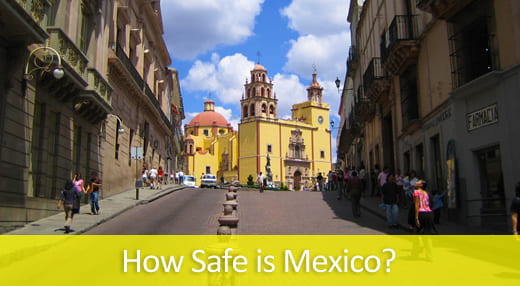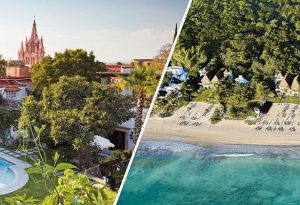
How Safe is Mexico was written by Carol Pucci and was posted on The Seattle Times
I’ll be taking my first trip to the Yucatan in Mexico later this year, and I’m excited to delve into Merida’s music scene, explore ancient ruins and relax along the Mayan Riviera.
I’m also thrilled about the prices. I’m paying $60 for two, including breakfast, at the Hotel Julamis, a boutique inn with a garden and pool in Merida’s historical center. For a short stay in the beach town of Puerto Morleos, I found a studio apartment for $80, with free bikes thrown in.
I’ve traveled in Mexico for years, and I always look forward to going back. Mexico is cheaper than Hawaii and, to me, more interesting than Costa Rica. But with all the reports of drug-related violence and killings, people ask, “Is it safe to go Mexico?”
I put the question to Mexican Tourism Secretary Gloria Guevara, who was in Seattle recently for meetings with airline executives and travel agents.
Her answer: “Get a map.”
Misconceptions of Mexico
Surprisingly, Guevara didn’t sugarcoat the impact the violence among warring drug cartels has had on how people feel about travel to Mexico. How could she when I brought along a news clipping about a man’s torso and arm found on a street near a beachfront hotel in Acapulco? Mexicans are as upset about what’s happening in their country as anyone.
But Guevara points out that Mexico is a big country, with 2,500 municipalities.
“All of the problems you hear about have occurred in just 80 of these places, less than 5 percent,” nearly all outside the places most travelers go.
“Asking if Mexico is safe,” she says, ” is a little like asking if something happens in Atlanta, is it safe to go to Seattle.”
Fair enough. So what is the biggest misconception people here have?
“When they think of Mexico, they don’t think about specific places,” Guevara says. “They just say ‘Mexico.’ ”
It’s true that drug-related violence has left thousands of Mexicans dead in the border towns of Ciudad Juárez and Nuevo Laredo. The violence lately has begun to spread, and the country remains under a U.S. State Department travel warning (see www.travel.state.gov).
It’s also true that most American tourists go to a handful of destinations such as Los Cabos, Puerto Vallarta and the Mayan Riviera, all areas as safe as they look.
Tourism is hugely important, generating 22 million international visitors annually, 2.5 million jobs in 2010, and $11.8 billion in revenue, according to Mexican government figures. It’s Guevara’s job to promote travel. But I get her point.
I’ve never felt unsafe in Mexico. Not taking the subway in Mexico City. Not riding a long-distance bus to Mazatlan in the state of Sinaloa, home to one of the most powerful drug cartels. Not walking the streets of Guadalajara, Sayulita, Oaxaca or Guanajuato.
Most people who go to Mexico feel this way, Guevara said. Ninety-nine percent of travelers who responded to a recent government tourism survey said they had a good experience and would go back again, she said.
“The fact of the matter is that most of central and southern Mexico sees less violence than many U.S. cities,” writes Lonely Planet guidebook author Robert Reid.
The U.S. travel warning advises which areas to avoid. None include Reid’s top destinations — Mexico City, Merida, Todos Santos, San Miguel de Allende, Huatulco, Playa del Carmen, Guanajuato and Puebla. I’d add Oaxaca for food and art and Guadalajara for shopping.
Guevara says that the best way to judge what it’s like in Mexico is to ask someone who’s been recently.






